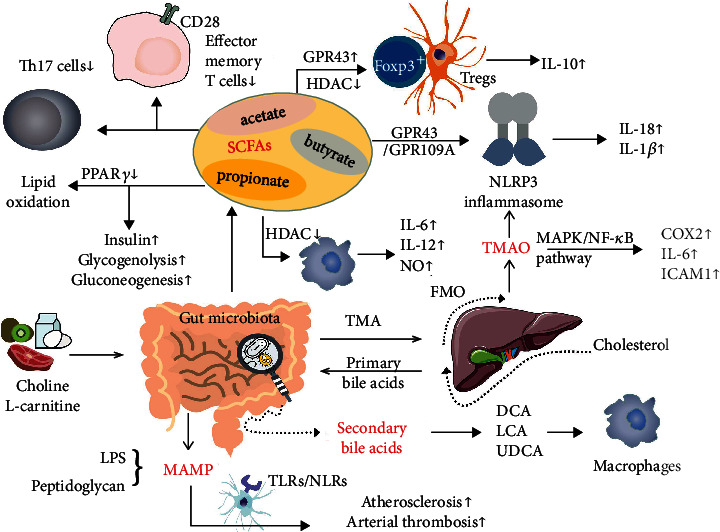Figure 1.

Mechanisms involved in gut microbiota-host communication. Short-chain fatty acids (SCFAs), mainly propionate, acetate, and butyrate, stimulate Fox3+ Tregs and macrophages via GPR43 activation and HDAC inhibition. Fox3+ Tregs subsequently produce the anti-inflammatory cytokine IL-10, while proinflammatory cytokines such as IL-6 and IL-12 are secreted by macrophages. Moreover, Th17 cells and effector memory T cells were downregulated by SCFAs. By suppressing PPARγ, SCFAs promote lipid oxidation. Although insulin production was enhanced by SCFAs, glycogenolysis and gluconeogenesis were both observed to occur even with SCFA treatment. L-carnitine and choline consumption contribute to the release of trimethylamine (TMA), which is then converted by FMO into trimethylamine N-oxide (TMAO). Both SCFAs and TMAO activate the NLRP3 inflammasome, leading to IL-18 and IL-1β release. Through the MAPK/NF-κB signalling pathway, TMAO increases the levels of COX2, IL-6, and ICAM1. Secondary bile acids such as deoxycholic acid (DCA), lithocholic acid (LCA), and ursodeoxycholic acid (UDCA) are produced in the intestine by gut microbiota and then participate in inflammatory modulation and blood sugar regulation.
